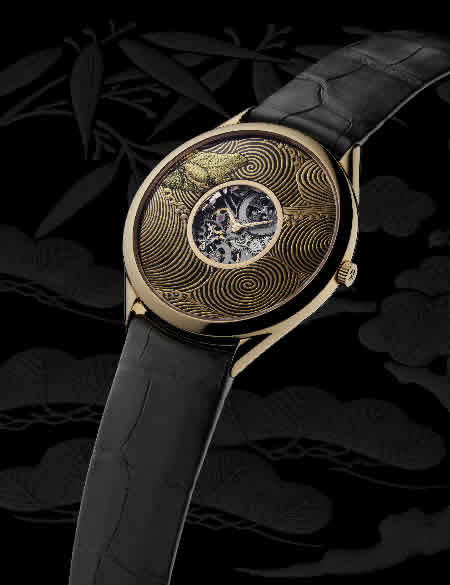The second set in a series of exceptional timepieces A cultural bridge between East and West
Métiers d’Art “La Symbolique des Laques”
The Métiers d’Art “La Symbolique des Laques” watch series was born of a respect for traditions and for the watchmaking creativity that since 1755 has been convincing Vacheron Constantin of the need to pass on skills, art and the craftsman’s motions so they will be written on the pages of history.
As a human adventure, an invitation to discover new horizons and to explore a new place where craftsmanship and innovation meet at their zenith, the Métiers d’Art “La Symbolique des Laques” series relates the encounter between the men of one of the oldest Japanese lacquer firms – Zohiko, located in Kyoto since its founding in 1661 – and those of Vacheron Constantin, the world’s oldest watchmaker to have been producing continuously since its creation in 1755. While chance and luck play a role in every meeting, a true relationship can be built only on the basis of deep affinities and shared values. These are immediately evident between these two companies, which have the same respect for traditions.
Experts in the art of maki-e, Zohiko’s craftsmen carry on an unequalled tradition of excellence built on artistic continuity and continuously renewed creativity. Maki-e, which as the most sophisticated technique of the art of lacquering is the province of a few rare craftsmen, means “sprinkled picture.” It consists of creating a design by sprinkling gold or silver dust over lacquer – usually black – while it is still wet. The lacquer is made from the sap of the lacquer tree, Rhus verniciflua, which originated on the high plateaus of central Asia and Tibet but today grows only in southern China, Vietnam and Japan. Maki-e developed very early in Japanese history. It fully matured as an art form between the eighth and twelfth centuries, becoming the predominant method of decoration beginning in the seventeenth century and remaining so to this day.
Source: Vacheron Constantin



